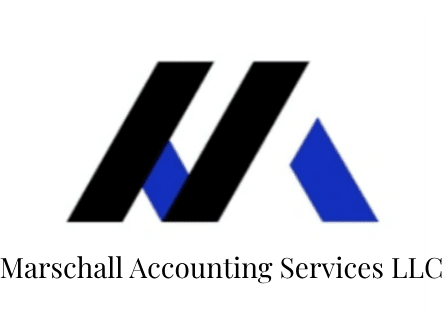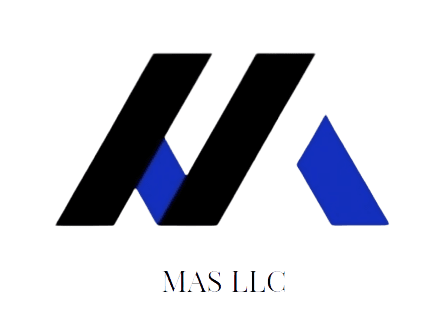Article: Tax Season 2021: An Even Crazier Version of 2020

Jessica I. Marschall, CPA
President & CEO Marschall Accounting Services LLC
Hold on tight—this is a long article. Skip around for sections pertaining to your personal tax situation or read in its entirety, possibly at bedtime to combat insomnia.
Many CPA and tax firms have closed or greatly reduced their volume of tax preparation clients. Many prefer engagements as outsourced CFOs, Controllers, and consulting to the rigors of tax preparation.
2021 pushed many of us even closer to dropping tax preparation services due to unprecedented unresponsiveness and aggressive collection efforts from the IRS, frustrated clients, and a constant change in the tax code through Covid-19 relief measures. For example, expenses paid with PPP funds were not deductible until they were deductible. Unemployment compensation was fully taxable until it was not fully taxable under a later-revised dollar volume cap.
Marschall Accounting Services has chosen to keep our tax preparation practice intact for both individual and business taxpayers. Now more than ever, clients have a greater need for competent CPA tax practitioners due to numerous factors, delineated below as well as tips for making this tax season slightly less painful than last.
Today, the Washington Post reports on the backlogs to be expected during the upcoming tax season.
Treasury Department officials on Monday said that the Internal Revenue Service will face “enormous challenges” during this year’s tax filing season, warning of delays to refunds and other taxpayer services.
In a phone call with reporters, Treasury officials predicted a “frustrating season” for taxpayers and tax preparers as a result of delays caused by the pandemic, years of budget cuts to the IRS, and the federal stimulus measures that have added to the tax agency’s workload.
Typically, IRS officials enter filing season with an unaddressed backlog of roughly 1 million returns. This year, however, the IRS will enter the filing season facing “several times” that, Treasury officials said, although they declined to give a more precise estimate. The IRS website says that as of Dec. 23, 2021, it still had 6 million unprocessed individual returns, and as of the start of this month it still had more than 2 million unprocessed amended tax returns, a separate category.
The IRS closed last filing season with more than 35 million unprocessed returns — a fourfold increase from the last year before the pandemic. As the backlog increased, the IRS also failed to respond to the enormous increase in calls for assistance. Only 9 percent of calls were answered by an IRS customer service representative, while only 3 percent were answered for the 1040 support line for individual income tax returns, according to the National Taxpayer Advocate, a watchdog group.
The pandemic forced the closure of many in-person centers where paper forms are processed, while also affecting the IRS workforce. But even before the pandemic, budget cuts to the IRS forced through by Republicans had led to a roughly 25 percent decline in the size of its staff. And these challenges were exacerbated by the federal response to Covid, which required the IRS to implement big new programs — from stimulus payments to the expanded Child Tax Credit — for tens of millions of families.[1]
New Collection Agencies
The IRS contracts with private collection agencies (PCAs) to collect inactive tax receivables, which totaled $32,004,349,273 in delinquent tax debt as of September 2020. The IRS has contracted with three new independent collection agencies. This should allow taxpayers to enter back into existing installment and payment agreements but could result in additional fines and liens imposed during the transition. Prepare for some bumps in the road. Refer a case to the CPA firm should a client have a lapsed plan or are contacted by one of the agencies below:
CBE Group, Inc.
Coast Professional, Inc.
ConServe
CPA firms can ensure the correspondence is legitimate.[2]
The Tax Gap
It is estimated that an estimated $458 billion (with a “B”) is outstanding in unpaid taxes each year. The Congressional Budget Office estimates that the $80 billion allotted to increasing IRS funding could increase revenues by approximately $200 billion over those ten years. This is a far cry from the $458 billion a year in unpaid taxes but it is a start.
Taxpayers should be clear that this increased staffing will primarily be working towards collection efforts. The 2018 Tax Cuts and Jobs Act is expected to increase the deficit by about $1.5 trillion (with a “T”!) over ten years.[3]Couple this with the unprecedented Covid spending of $7 trillion from the Federal Reserve, $5.73 trillion from legislative action, and $904 billion in administrative spending by both the Trump administration ($598 billion) and the Biden administration ($306 billion). [4]
Our federal government is broke and in desperate need of revenue collection.
The Current State of the IRS
The article quoted above provides an overview of the current state of the IRS. During 2020 tax season, clients waited months for tax return processing and refunds to be received—and many are still waiting. Typically, these were clients who were contacted by the IRS for more information or had atypical returns. Still, many taxpayers experienced extreme frustration with the IRS during the 2021 tax season for standard returns.
Even our IRS designated Pro Line had no one home to answer. Some of us had to resort to having a staff member call in for hours attempting to get a live person on the line. Our company and many of our colleagues have needed to modify current engagement letters stating that calls into the IRS are not included within our scope of work. I once spent an entire week attempting to speak with a live agent for a client with foreign-sourced income only to have multiple disconnections and wait times exceeding 3-4 hours. This requires a CPA and their staff to clear our calendars as meetings and other calls are not possible while we are spending time dialing and waiting.
For clients attempting to call in on the general line, the answer rate and wait times are even worse.
Frustratingly, this site will often give the unhelpful message of Still Processing; but use this first before spending money on CPA fees for calling in just to receive the same message.
To avoid issues with a return, ensure everything has been included on the first go round. Although they can now be filed electronically, amended returns take much longer to process and should be avoided when possible.
How to Prepare for a Smooth-ish Tax Season
Here is our annual list of how to make this year’s tax return preparation as streamlined as possible.
1. Start Early
W2s and 1099s have filing deadlines of 1/31/22. Taxpayers should receive these either electronically or by mail. (Side note: avoid the mail at all costs!) K-1s from partnerships and S-Corps are due to taxpayers after the tax return deadline for 1065 returns (partnerships) and 1120S returns (S-Corps) of 3/15/22. Of course, if the partnership or S-Corp return is extended, the taxpayer waiting for the resultant K-1s must also extend or file and then amend when the K-1 is available.
Deliver documents electronically and securely (do not email!) to the CPA firm as quickly as possible. We must charge more to clients who drop off the dreaded shoebox or trash bag of receipts requiring administrative time to sort and scan. Make use of the CPA firm’s secure portal for uploading.
Notify the CPA when everything is uploaded. It is difficult for the workflow when clients communicate that they are ready for tax prep and are still missing half the documents.
2. Get Organized, Understand Deductions, and Ensure Inclusion of Forms
If a client has a small business, they must use accounting software to achieve the best accounting and tax results. The most popular accounting software is QuickBooks, either desktop or online, but Xero has a great product, as well. This software captures all transactions, allows uploading of receipts and allows the CPA to complete a tax return as efficiently and inexpensively as possible.
Most importantly, should a client come under review (the dreaded “A” word AUDIT), and they employ accounting software, the CPA engagement will cost much less compared to a client who only keeps receipts and manages finances in Excel spreadsheets. Audits for clients like this can run into the thousands.
If a client already had a year without accounting software, provide totals to the accountant by category and scan in important tax documents.
Ensure understanding of all of deductions available for small businesses, either reported on the Schedule C for sole proprietors and single-member LLCs or Schedule E if a partnership or S-Corp. Small business owners are hammered with self-employment tax but enjoy deductions not available to W2 employees such as:
· Mileage deduction
· Deprecation of assets
· Write-off of business expenses including office supplies, uniforms, subcontractor payments, software purchases, employee wages, business property taxes and a host of other deductions.
· Meal deductions (which were pumped up to 100% deductible for restaurant meals in 2020 and 2021 and will return to 50% deductible in 2022.)
· Home Office deduction
· Qualified Business Income deduction, which is way too detailed to describe within this article, but an important deduction created for pass-through entities under the Tax Cuts and Jobs Act.[5]
Business clients often express that they do not want to be audited and avoid taking legitimate business deductions. If a deduction is legitimate, is allowable under the Internal Revenue Code, and can be substantiated…take it.
Schedule E
Rental property also has a host of deductions including:
· Mortgage interest paid,
· Property taxes paid
· Repairs and maintenance
· Improvements (which must go on the balance sheet)
· HOA fees
· Depreciation of the improvement portion of the property
· Many other general expenses for upkeep of the property
Note that property must be put on the balance sheet and divided between land and improvements. Depreciation is required to be taken. When a property sells, there is a 25% Depreciation Recapture. This tax treatment is beyond the scope of this article but ensure that a tax preparer has a firm understanding of the Schedule E and tax treatment.[6]There is also the concept of a Section 1031 like-kind exchange now only allowable for real and not personal property.[7]
Ensure receipts are kept for charitable deductions. Form 8283 must be included for amounts donated in non-cash deduction (think dropping clothes to Goodwill) and an appraisal must be included for non-cash amounts in excess of $5,000. Again, this goes beyond the scope of the article but ensure a sound understanding by a CPA.[8]
Schedule A
Mortgage interest can only be deducted on up to $750k of a mortgage loan. State and local taxes (SALT) are capped at $10k. This includes state taxes paid, real estate taxes and personal property taxes. Many taxpayers with higher incomes and/or higher taxed states lose thousands on this provision of the TCJA.
If a taxpayer can overcome the 7.5% Adjusted Gross Income threshold for medical expenses, ensure expenses are maintained in a detailed spreadsheet with back-up receipts and proof of expenses. Typically, clients are audited 2-3 years later. Our firm recently needed to defend a taxpayer with $50,000+ in medical expenses where not even a hand-written list of the amounts could be found. They were charged with under-payment penalties and interest and now find themselves firmly on the IRS’ radar.
Schedule D
Must include all short- and long-term capital gains, which includes stock sales, sales of assets, and especially sales of personal residences. Our firm took in a high volume of emergency clients who used TurboTax and forgot to include the sale of a personal residence. There is a $500k gain exclusion for Married filing Joint taxpayers and a $250k exclusion for Single taxpayers given the 2/5 rule (lived in the house for two out of the prior five years…and by the way…if a taxpayer did not hit the two years, a percentage exclusion can still be taken).
However, a taxpayer must affirmatively take this exclusion. We saw clients receive tax bills of anywhere from $75,000 to $250,000 in unpaid taxes because they did not accurately report the exclusion for sale of a personal residence. [9]
1099s and 1098s
Do not forget to include these! The IRS has record when they are filed using the taxpayers Social Security or Employer Identification Number. Some 1099-NEC amounts are subject to self-employment tax, which is both the employer and employee portion of Social Security and Medicare taxes. Ensure you report 1099-NEC income. Ensure you include all additional 1099s received as well, even the little 1099-INT for $5.23 from a bank account. Again, the IRS has record of each form and a taxpayer can find themselves in a review by omitting them. Also, if you are an employer, do not forget to file your 1099s and W2s by the deadline of 1/31/22. Major fines, which compound over time, are assessed when not filed or filed late. [10]
3. Work with a Financial Advisor
Financial advisors possess specialized knowledge outside the scope of a CPA regarding investment strategies and best options for maximizing earnings. Working with both a financial advisor and a CPA enables a client to maximize earning potential while considering tax consequences along the way. A financial advisor who is also a CFP has an added advantage of having a broader understanding of tax code and investment implications. A financial advisor who understands the AMT implications of an ISO, NSU, and/or RSU is a CPA’s dream!
Financial advisors are not free. Payments to highly competent financial advisors are easily overcome by the superior investment strategies employed and increased earnings. Developing a relationship with a CPA and financial advisor working together provides the most bang for the buck.




